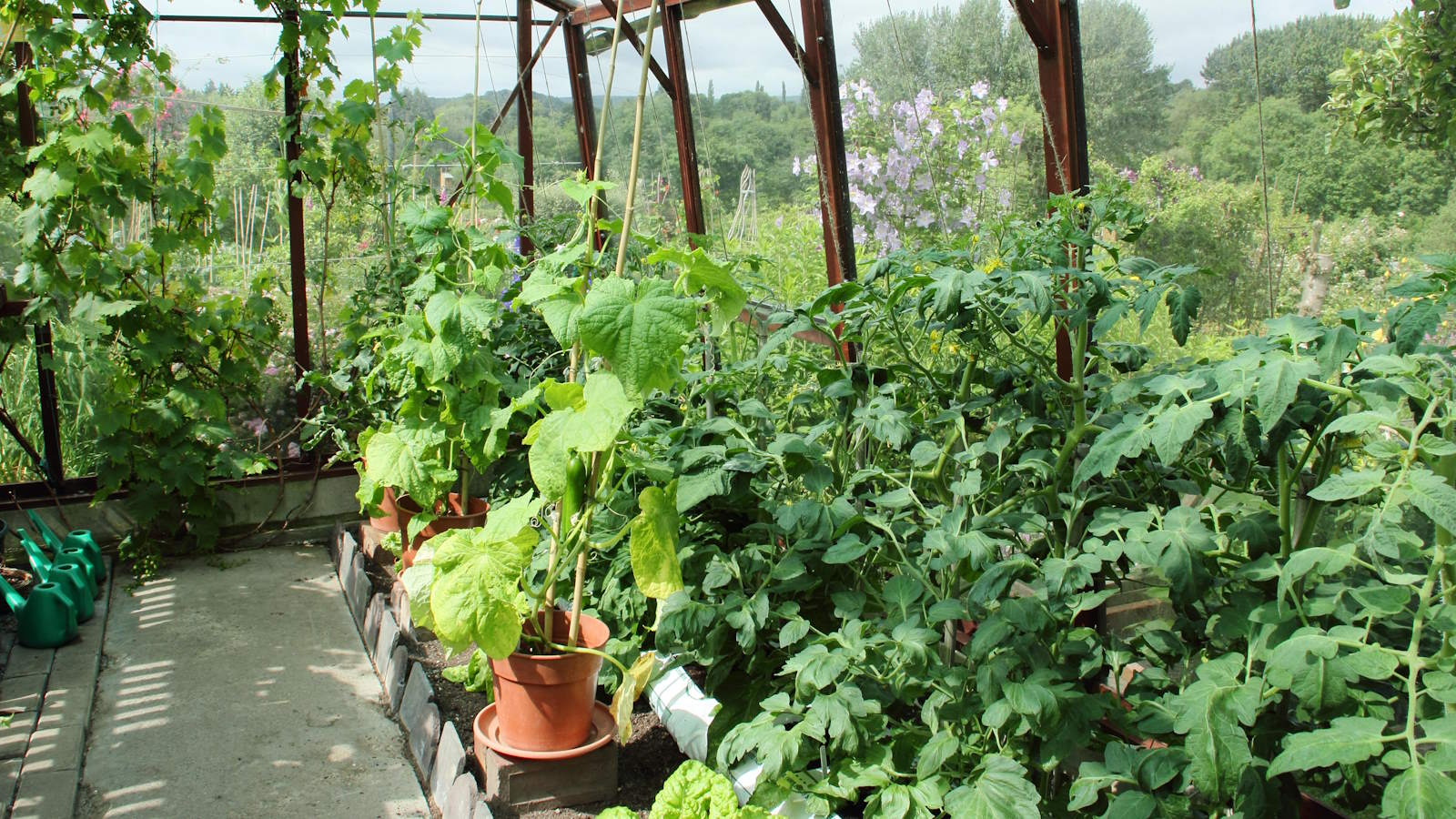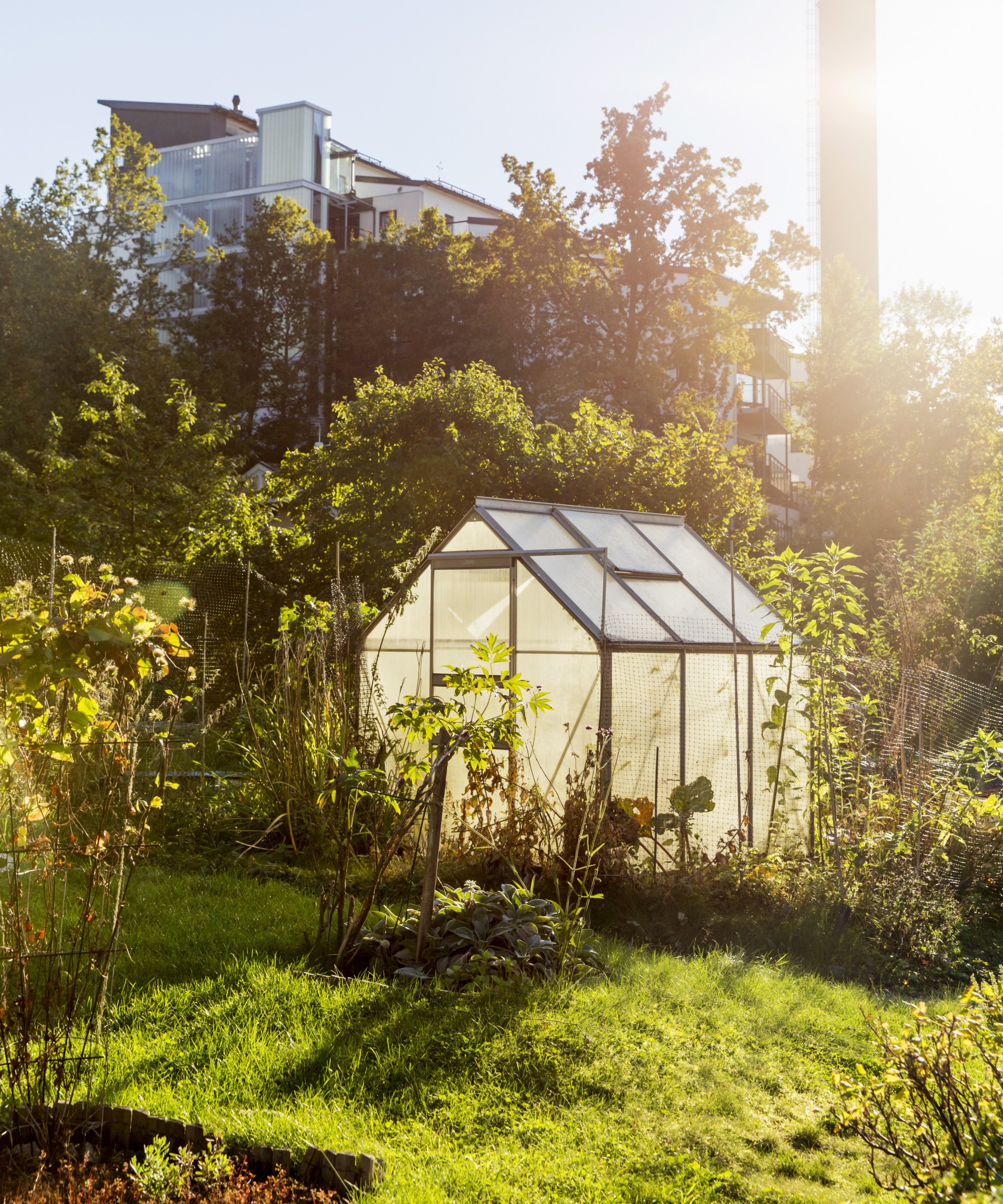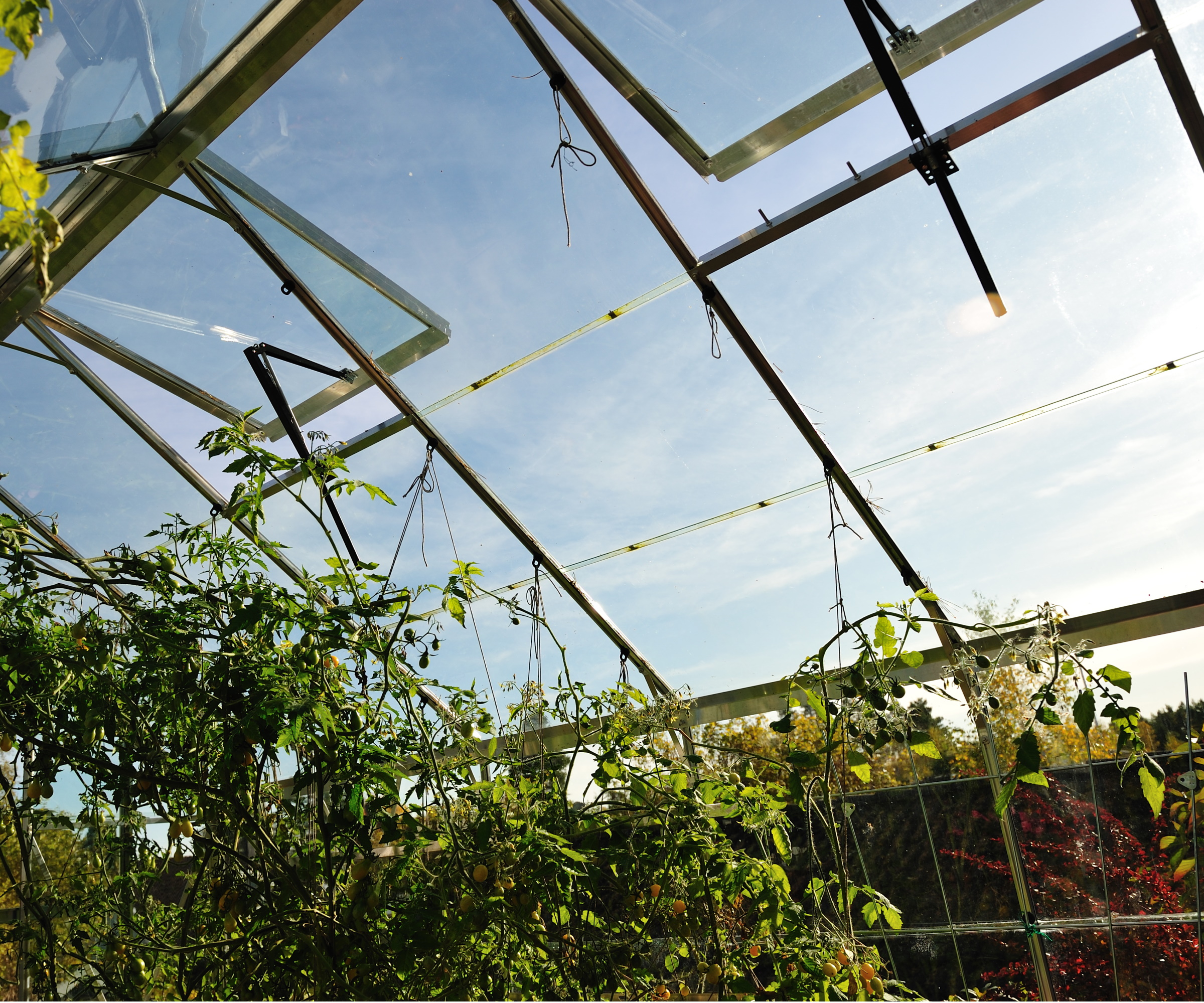
A greenhouse can get incredibly hot during the summer months and it is important to avoid the temperatures getting so high as to damage plants. As well as ventilating the greenhouse and providing shade, damping down the floors is a simple way to prevent plants from getting harmed by extreme heat.
Even heat-loving plants will suffer when the temperatures get too high and exceed 80°F. They can get heat stress, which can cause wilting, defoliation, and leaf scorch while flowering and fruiting can also be badly affected.
If you grow anything in a greenhouse, keep an eye on the forecast and monitor temperatures. On top of watering plants to keep them hydrated, protecting them from environmental factors, including extreme heat, will help them thrive. Thankfully, damping down a greenhouse is quick and simple to do.

Damping down a greenhouse - in focus
I worked in greenhouses for many years as a professional gardener. It included large greenhouses focused on propagating plants and production greenhouses for growing tomatoes, peppers, eggplants, and other heat-loving crops. I worked in greenhouses year-round and used damping down to cool high temperatures. I have also spoken to some greenhouse experts to explain the benefits of damping down and how to do it.
Benefits of damping down a greenhouse

Damping down a greenhouse is a great way to reduce the temperature within a greenhouse, especially when the temperatures rise in the summer months.
Along with ventilating a greenhouse in summer, it is beneficial to cool the greenhouse and prevent plants from struggling in stifling heat. Having worked in a greenhouse during the summer, I have experienced the cooling effect that damping down can provide.
‘The main aim of damping down in a greenhouse is to reduce the temperature within your greenhouse through ‘evaporative cooling’ – the air is cooled down to a comfortable temperature due to water evaporation,’ says Lucie Bradley from Two Wests & Elliott.
‘It is one of the simplest, easiest and most economical ways of reducing greenhouse temperatures.’
Damping down can also be a practical method of increasing the humidity levels inside the greenhouse. This can prevent plants from suffering stress as a result of the heat.
Sarah Warner, greenhouse manager at the Case Western Reserve University Farm at Case Western Reserve University, says that increasing the humidity aids a plant’s development. She adds: ‘If humidity levels drop below 60% at night and 80% during the day this may cause plants to grow slower than typical.’
Keeping the greenhouse cool and moist can also combat pests and diseases that thrive in drier conditions, including red spider mites and powdery mildew.
How to damp down a greenhouse

Damping down a greenhouse is a speedy and simple task to complete as part of planning your greenhouse activities for the day. On hot and dry days when the temperature inside the greenhouse is likely to top 68°F, it is beneficial to proactively implement the cooling technique - as plants can get damaged when the temperatures reach above 80°F.
Use a bucket, watering can, or garden hose, to apply water to the greenhouse’s hard surfaces, predominantly the floor and paths but also any shelving or staging. Leave it to dry naturally and cool the air as it evaporates.
Take care not to splash lots of water onto foliage or fruits inside the greenhouse, as excess moisture on plants can increase the risk of fungal diseases. If you are growing plants in ground-level beds alongside paths, take care not to flood the beds too as this can risk overwatering plants.
Damping down can be done throughout the day, however, the ideal time is early in the morning. ‘As the water slowly evaporates throughout the day, it creates sufficient humidity within the air to help prevent your plants from suffering heat stress,’ explains Lucie.
‘You might find temperatures on dry summer days can dictate that you are damping down in your greenhouse up to three times a day – early morning, late evening (just after you have ‘closed’ your greenhouse for the day) and at mid-day.’
The greenhouse doors and windows should stay open during the day alongside damping down to help keep the temperatures down and provide some airflow.
Monitor the temperature and humidity of a greenhouse and get instant alerts once the temperature or humidity is out of its pre-set range
This metal watering can hold 1 gallon of water and has a removable spout and two handles to make it easy-to-use outdoors or inside a greenhouse
A lightweight garden hose that expands to a length of 100 feet in just seconds when water pressure is applied. With 8 different spray patterns to suit any watering task
FAQs
Should you open your greenhouse every day?
Opening any backyard greenhouse doors and vents is important on warm and sunny days to reduce the temperature. During the hottest months, they can even be kept open throughout the night if the temperatures stay high.
Only open the greenhouse when the temperature rises, as having doors or vents open on colder days can result in lower temperatures or cold draughts that can harm plants.
Using a digital thermometer that tracks the temperatures day and night will help you make informed decisions about when to open your greenhouse.
So simple and so effective - that is why damping down a greenhouse should be on your summer gardening checklist. Whether you grow vegetables in a greenhouse, flowers, or tropical plants, keep them healthy and safe from heat stress by damping down the floors when those temperatures rise.







